D.C. Circuit Review – Reviewed: Fighting Words From Orin Kerr
Well now he’s done it — big time. Orin Kerr has crossed the line. Sure, Professor Kerr writes interesting posts over at the Volokh Conspiracy. Yes, he may be the leading Fourth Amendment scholar of his generation. And true, he may be sociable — even friendly — when you speak to him in person. But that is no excuse for this outrageous statement:
In fairness, he has walked the idea back a bit. But he really should delete the tweet (if not his account) altogether. After all, what about this?
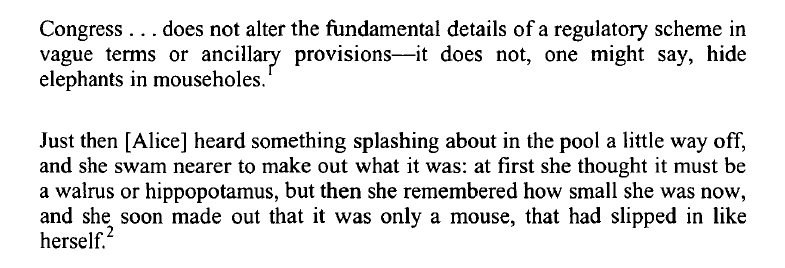
The first quote comes from the U.S. Supreme Court, introducing the elephants-in-mouseholes doctrine. The second quote comes from Alice in Wonderland, demonstrating that bigness and smallness are elusive concepts. If you’re writing an article to explain why the elephants-in-mouseholes doctrine is challenging to apply precisely because it can be hard to tell the difference between an elephant and a “rather plump mouse” or between a mousehole and a “rather cramped circus tent,” then that juxtaposition is pretty darn compelling, if I do say so myself.*
If that isn’t good enough, what about this one?
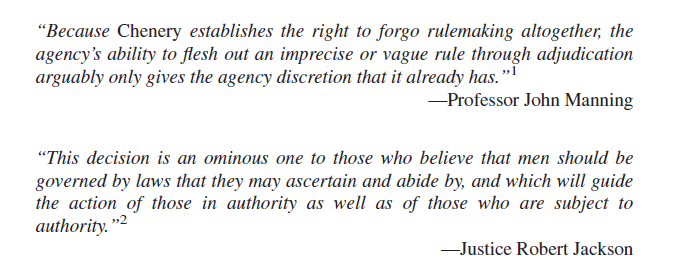
The first quote comes from John Manning’s (legendary, as far as scholarship goes) article on Seminole Rock, which includes an important aside about Chenery II. The second quote comes from Justice Jackson’s Chenery II dissent, which explains why that particular power can be pernicious. If you’re writing an article about why the Court should be mindful of the dangers of Chenery II when evaluating the effects of Seminole Rock, don’t those quotes set the tone pretty well?
And you know what? I’m not the only one who thinks that a solid quotation is a great way to frame an article. As Matt Lawrence observed, what about Judge Edwards’ use of this quote?
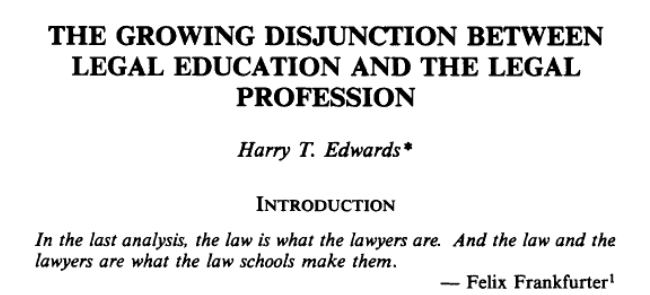
Take that Professor Kerr!
In fact, quotations are so useful that some judges use them in opinions. A few years ago, Judge Henderson opened an opinion this way:
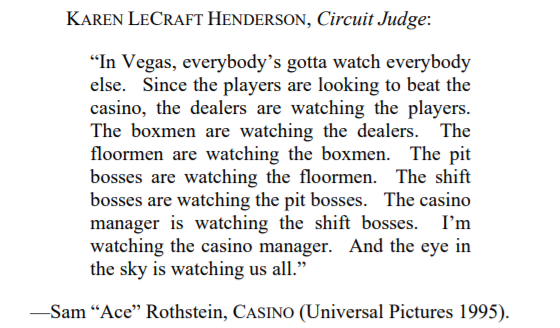
I’m not (generally) a fan of pop-cultural references in opinions. But if a court is writing an opinion about casino security, that isn’t a bad way to get things moving. Well done, Judge Henderson.
The D.C. Circuit decided six opinions this week. In Shapiro v. DOJ, Judge Williams (joined by Chief Judge Garland and Judge Griffith) essentially opened his opinion with a pair of quotations, albeit ones embedded in the text rather than as a standalone quotes: 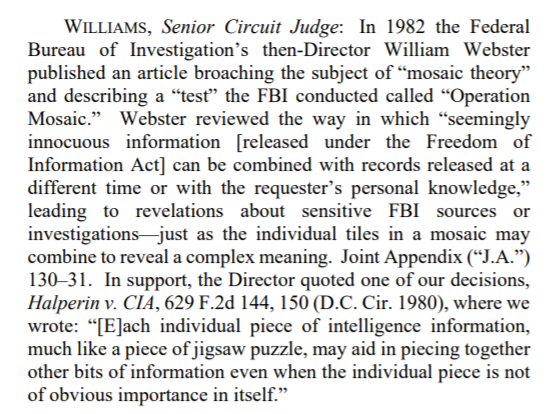
On the merits, the Court concluded that because of FOIA, the FBI may have to turn over its views on the mosaic theory’s application to FOIA. Interesting. To get things started though, perhaps the D.C. Circuit should have opened its opinion with a quotation about a slightly different mosaic theory: “What might a mosaic theory mean? What challenges does it entail?”
The Court’s other opinions don’t start with quotations. But maybe a quote or two would have helped. Consider DHSC, LLC v. NLRB, which begins this way:
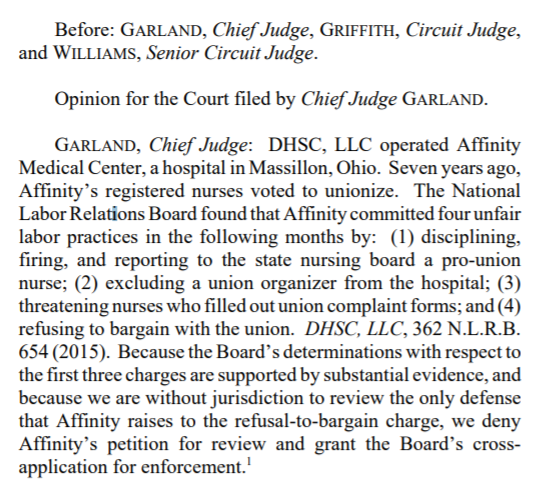
Wouldn’t a quote from North and South have been helpful? Say, “We’re resolved to stand and fall together; not a man on us will go in for less wage than th’ Union says is our due”? (Probably not.)
Next, we have Northern Virginia Electric Co v. FERC, which starts like this:
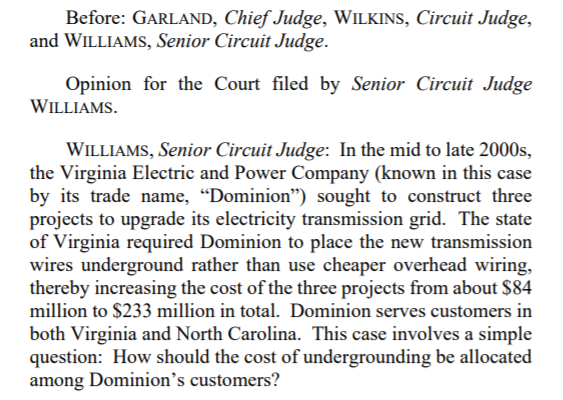
An apt quote here perhaps also could have helped the reader ease into the dispute. In fact, Judge Williams offered such a quote later in the opinion: “The effective date for a change in the allocation of costs, i.e., ordering a different allocation of costs among customers as compared to the current allocation of costs, if required at all, will be determined in the Complaint proceeding [the Formal Challenge] based on the requirements of section 206 of the FPA as applicable to these circumstances.” Williams even added the italics and the brackets himself.
(More seriously, there is an interesting discussion about notice on pages 7 to 8 of the opinion.)
Then we have Cares Community Health v. HHS:
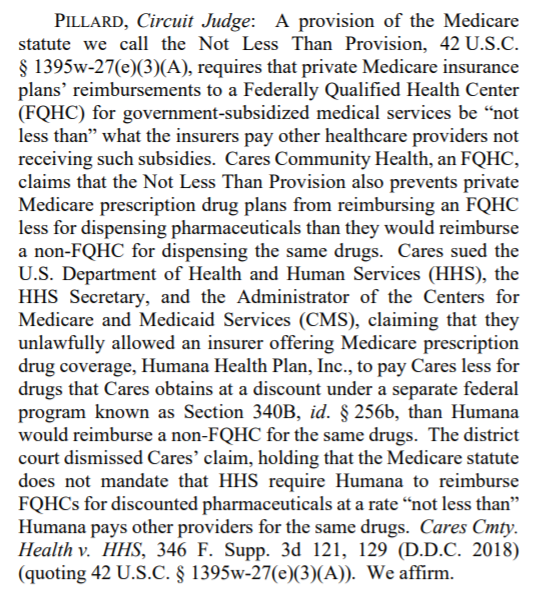
Aren’t you dying to see the full text of the Not Less Than Provision? 😉
(The most interesting part of this opinion, it seems to me, is on page 13, which states: “HHS has not requested judicial deference to its interpretation of the Medicare statute.” If you are interested in this subject, here is a useful link to start your research.)
What about Indian River County v. DOT? Here’s how it opens: 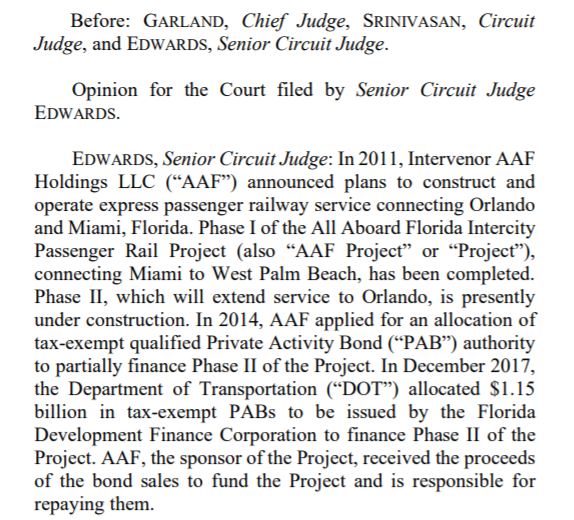
Hmm. I confess — there isn’t a great quote for this one, which concerns the zone-of-interests test, taxes, and environmental law. I do note, however, that this lengthy opinion liberally uses block quotes. (Kidding aside, check out the zone-of-interests analysis on pages 17 to 23.)
Finally, we have Dunlap v. Presidential Advisory Commission, in which a per curiam panel (Chief Judge Garland and Judges Wilkins and Williams) concluded that the district court misapplied mandamus when it ordered the Commission “to produce emails between the Vice President’s staff and individuals who were then commissioners discussing potential appointees to the Commission.” Here is a perfect quotation that the panel could have used to open its opinion, instead of waiting until page 7 to launch: “Mandamus is ‘one of the most potent weapons in the judicial arsenal,’ a ‘drastic and extraordinary remedy reserved for really extraordinary causes.’”
What’s the takeaway from all of this? A quotation can be a great way to start things up — and Professor Kerr’s Twitter feed is full of fighting words.
* I wish I could claim credit for finding the Alice in Wonderland quote. But I can’t; it was recalled by my friend, co-author, and co-clerk, Jacob Loshin. For what it is worth, Congress could save everyone a lot of trouble by itself legislating a more administrable line, for instance, based on dollar value.
D.C. Circuit Review – Reviewed is designed to help you keep track of the nation’s “second most important court” in just five minutes a week.



